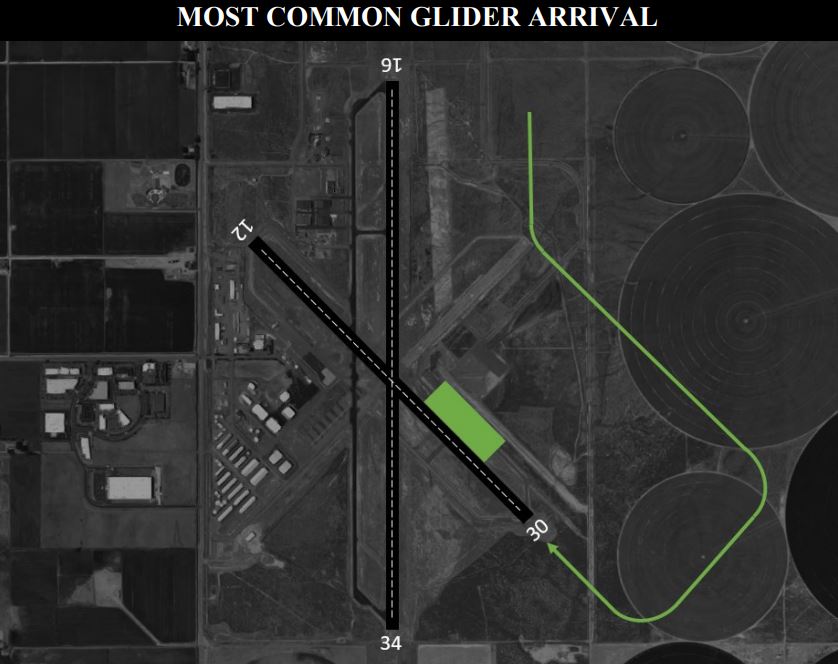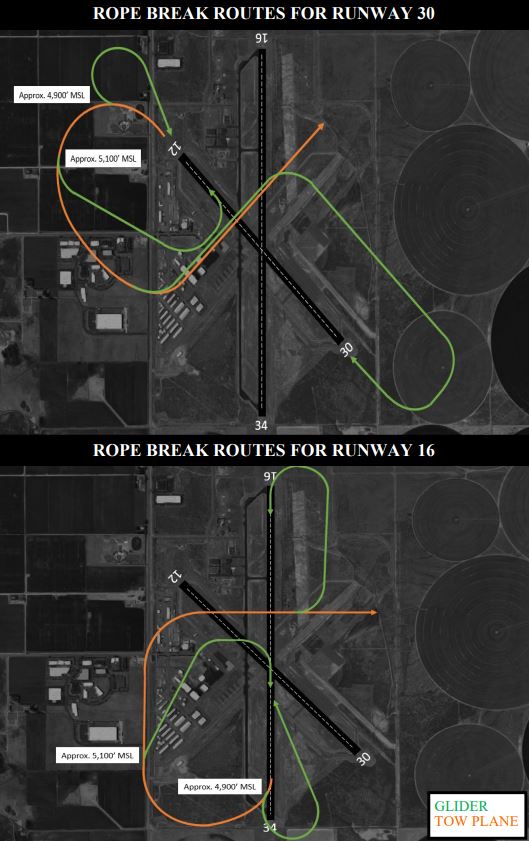
MINDEN GLIDER OERATIONS OVERVIEW
Minden is world renown location for gliders and soaring operations. We often see people from all over the world arrive in Minden during the spring and summer months. What makes Minden so unique for gliders are the abundance of updrafts and rotors which are produced by the Sierra Nevada Mountain Range. Because of the amount of glider traffic this can present some challenges for powered pilots who are not familiar with glider operations at an airport. Outlined in this guide are specifics as to how gliders arrive and depart the Minden-Tahoe Airport. If you have any additional questions regarding glider operations here at Minden-Tahoe Airport, please feel free to contact the administration office @ (775) 782-9871 or Soaring NV @ (775) 782-9595.

Glider Departures:
• The glider staging ramp is located adjacent to runway 30 on the east side of the airport.
• Gliders are towed by a tow plane, typically a Piper Pawnee, up to between 5,700 and 10,000 feet MSL.
• The glider and tow plane may need enter the runway and attach the tow line. This means that the tow plane and glider may occupy the runway for a couple minutes prior to departure.
• The typical procedure for gliders departing runway 30 requires a left 270 degree turn back towards the airport to cross midfield and transition to the east where they normally climb to altitude.
• In the event of a rope break, or simulated rope break, the glider pilot could make an immediate turn back to the airport and attempt to land on the closest available runway.

Glider Arrivals:
• All glider traffic patterns are established on the east side of the airport. Use caution when departing or arriving the airport to/from the east.
• Per FAR 91.113, glider traffic has the right of way over powered traffic.
• Gliders will make all attempts to exit the runway at either the glider staging or the ramp. In the event they do not have enough momentum, they will need to exit their aircraft to push it off the runway so be alert and be patient.

Glider Rope Breaks and Emergency Procedures:
In glider operations a rope break is an emergency procedure. Similar to an engine failure in a powered aircraft, a rope break is commonly practiced to ensure pilot proficiency and by student pilots preparing for check rides. Although the airport encourages glider pilots to announce rope breaks over CTAF either prior to departure,
for a planned rope break, or immediately in the event of an unexpected emergency; however, sometimes time will not allow for a radio call.
RUNWAY 30:
In the event of a rope break below 4,900’ MSL, expect the glider to perform an immediate 180 degree, left turn back to and land on runway 12.
Between 4,900’ and 5,100’ MSL the glider will attempt to make left traffic back to and land approximately mid-field on runway 30. Above 5,100’ MSL the glider will join the right downwind for a normal glider traffic pattern for runway 30.
In all cases, the tow plane will continue on a normal climb out circling back over midfield and transitioning east-bound.
RUNWAY 16:
In the event of a rope break below 4,900’ MSL, expect the glider to perform an immediate 180 degree, left turn back to and land on runway 34. Between 4,900’ and 5,100’ MSL the glider will attempt to make right traffic back to and land approximately mid-field on runway 16.
Above 5,100’ MSL the glider will join the left downwind for a normal glider traffic
pattern for runway 16.
In all cases, the tow plane will continue on a normal climb out circling back over midfield and transitioning east-bound.
